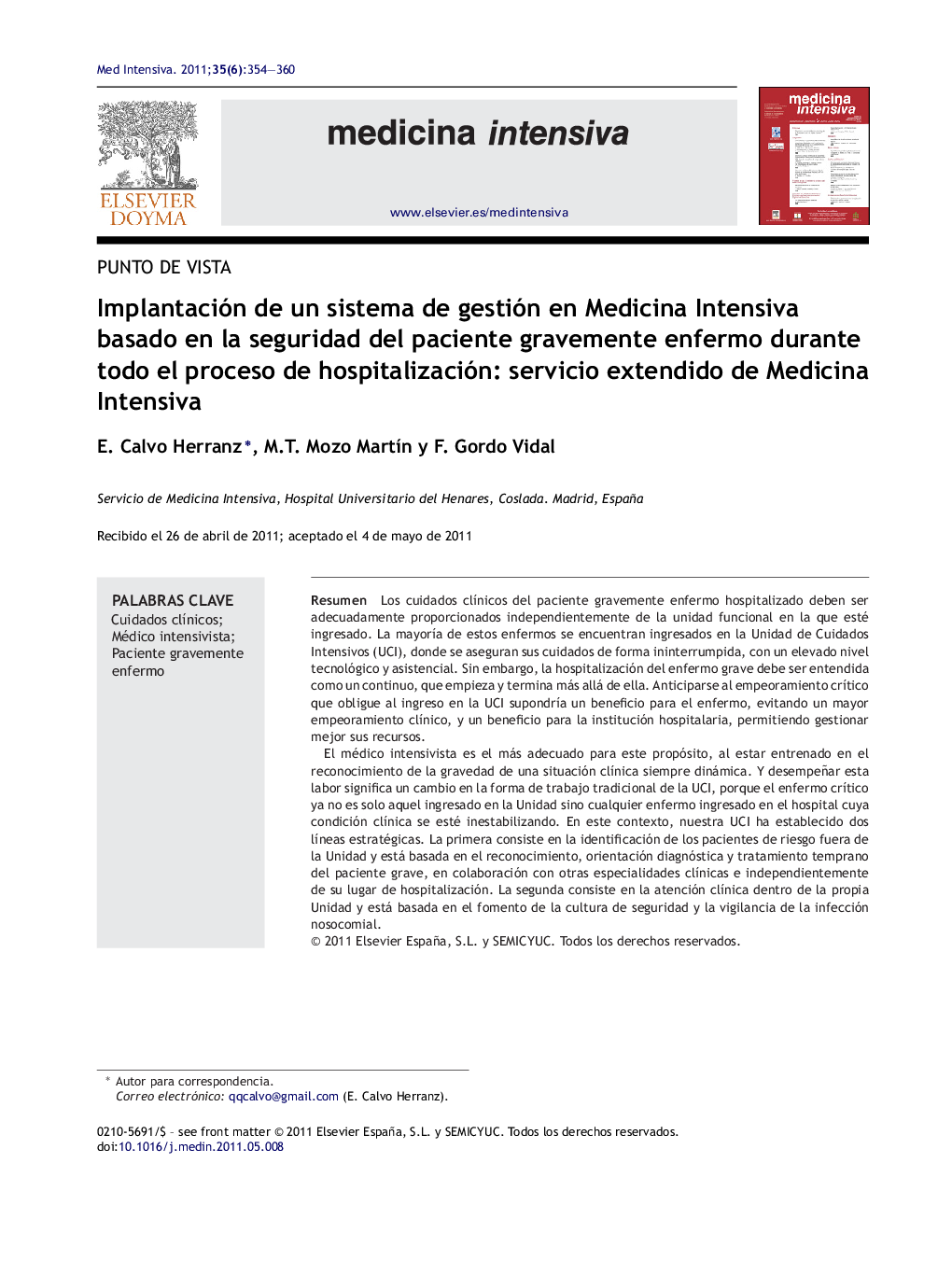| Article ID | Journal | Published Year | Pages | File Type |
|---|---|---|---|---|
| 3113399 | Medicina Intensiva | 2011 | 7 Pages |
ResumenLos cuidados clínicos del paciente gravemente enfermo hospitalizado deben ser adecuadamente proporcionados independientemente de la unidad funcional en la que esté ingresado. La mayoría de estos enfermos se encuentran ingresados en la Unidad de Cuidados Intensivos (UCI), donde se aseguran sus cuidados de forma ininterrumpida, con un elevado nivel tecnológico y asistencial. Sin embargo, la hospitalización del enfermo grave debe ser entendida como un continuo, que empieza y termina más allá de ella. Anticiparse al empeoramiento crítico que obligue al ingreso en la UCI supondría un beneficio para el enfermo, evitando un mayor empeoramiento clínico, y un beneficio para la institución hospitalaria, permitiendo gestionar mejor sus recursos.El médico intensivista es el más adecuado para este propósito, al estar entrenado en el reconocimiento de la gravedad de una situación clínica siempre dinámica. Y desempeñar esta labor significa un cambio en la forma de trabajo tradicional de la UCI, porque el enfermo crítico ya no es solo aquel ingresado en la Unidad sino cualquier enfermo ingresado en el hospital cuya condición clínica se esté inestabilizando. En este contexto, nuestra UCI ha establecido dos líneas estratégicas. La primera consiste en la identificación de los pacientes de riesgo fuera de la Unidad y está basada en el reconocimiento, orientación diagnóstica y tratamiento temprano del paciente grave, en colaboración con otras especialidades clínicas e independientemente de su lugar de hospitalización. La segunda consiste en la atención clínica dentro de la propia Unidad y está basada en el fomento de la cultura de seguridad y la vigilancia de la infección nosocomial.
The clinical care of hospitalized seriously ill patients must be suitably proportionate independently of the functional unit to which they have been admitted. Most of these patients are admitted to the Intensive Care Unit (ICU), where uninterrupted management is provided, with important technological and care resources. However, hospitalization of the seriously ill patient must be understood as a continuum starting and ending beyond hospital stay. Anticipating critical worsening requiring admission to the ICU would be of benefit to the patient, avoiding greater clinical worsening, and also would be of benefit to the hospital, by allowing improved resource management.Intensivists are the professionals best suited for this purpose, since they are trained to recognize the seriousness of an always dynamic clinical situation. Addressing this task implies a change in the traditional way of working of the ICU, since a critical patient is not only a patient already admitted to the Unit but also any other patient admitted to hospital whose clinical situation is becoming destabilized. In this context, our ICU has established two strategic lines. One consists of the identification of patients at risk outside the Unit and is based on the recognition, diagnostic orientation and early treatment of the seriously ill patient, in collaboration with other clinical specialties and independently of the hospital area to which the patient has been admitted. The second line in turn comprises clinical care within the actual Unit, and is based on the promotion of safety and the vigilance of nosocomial infections.
